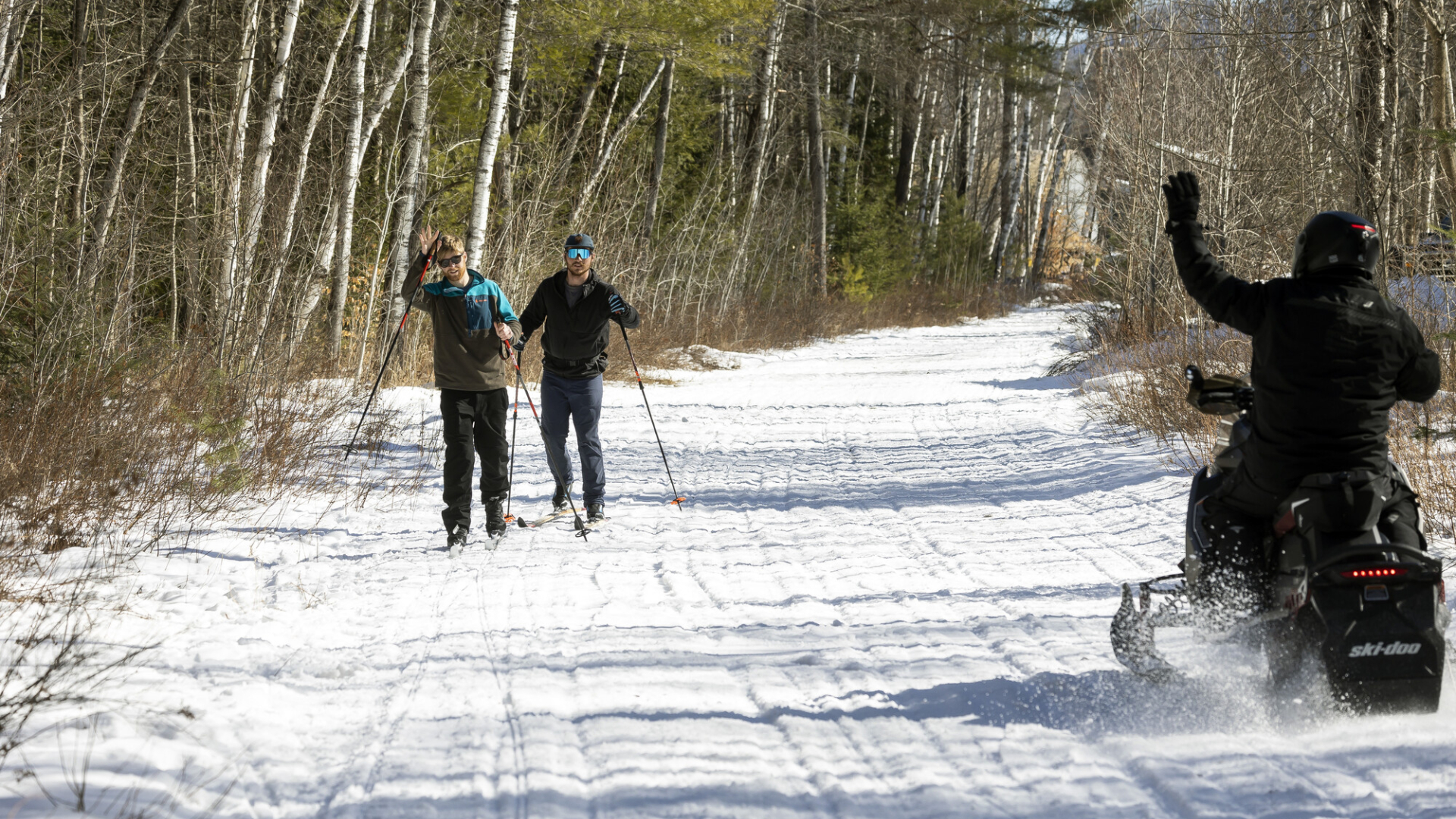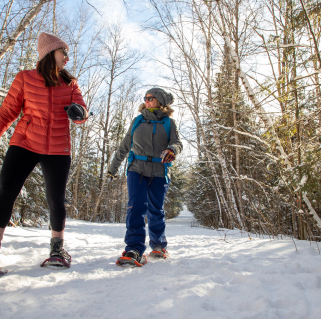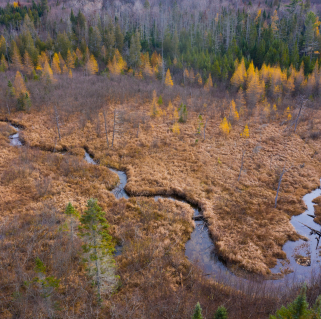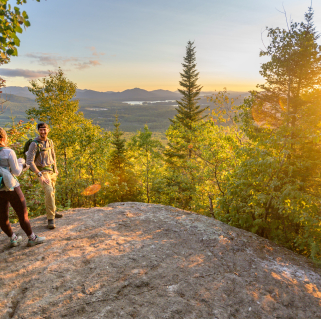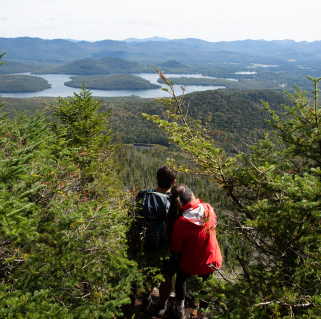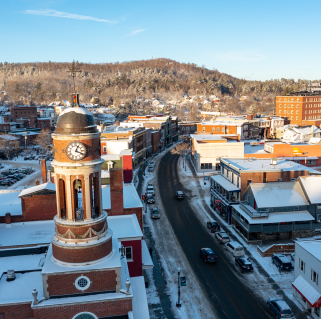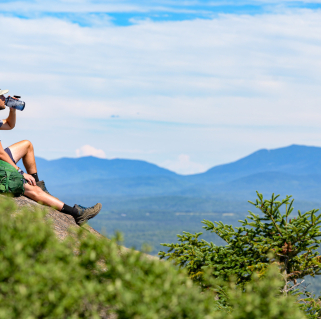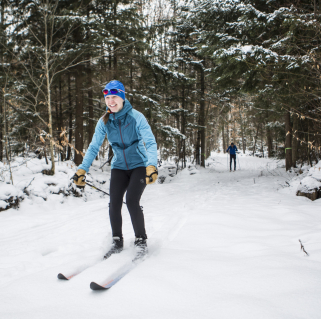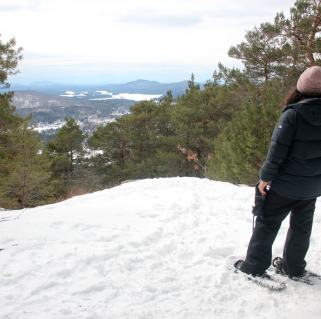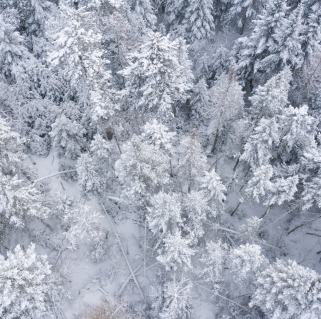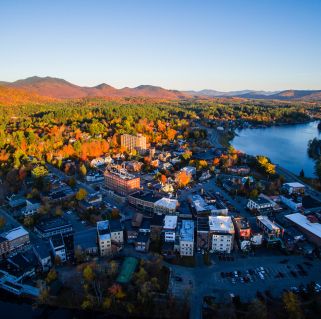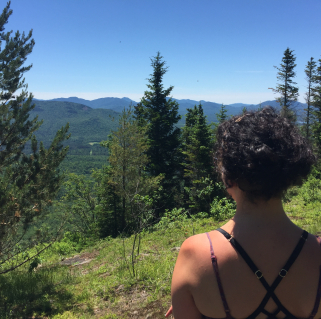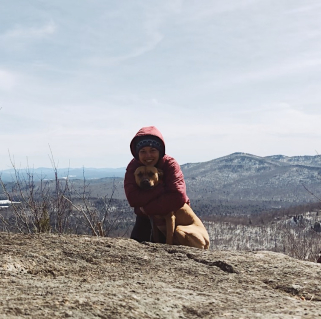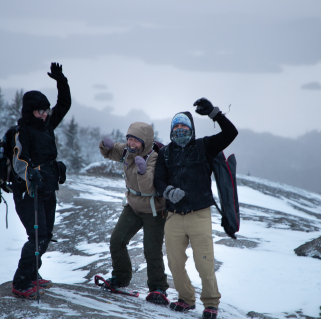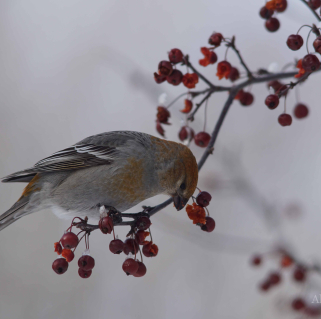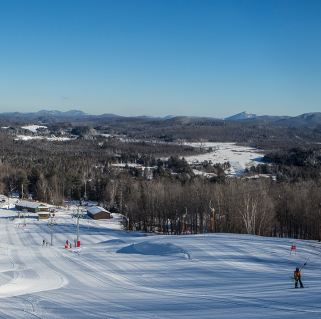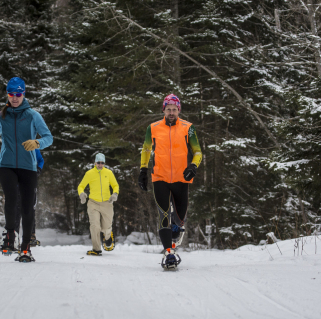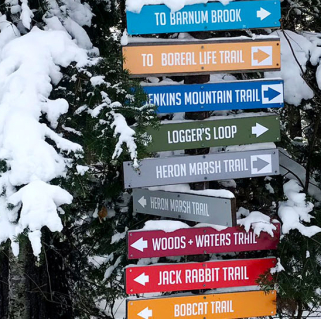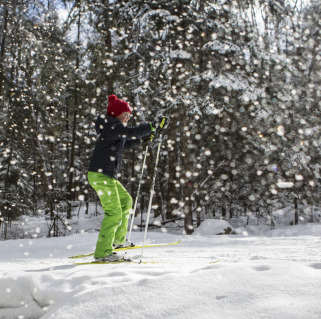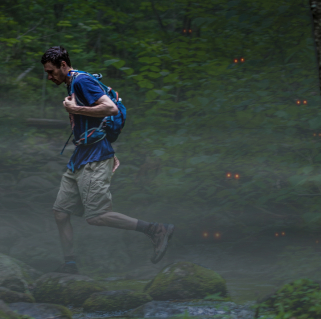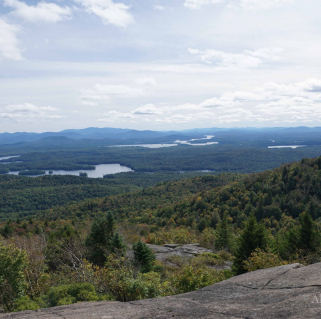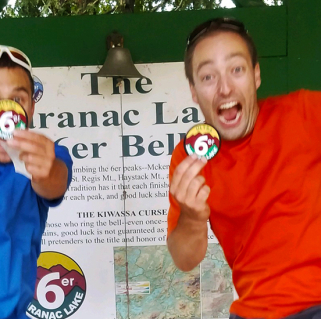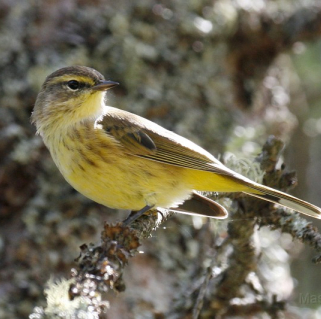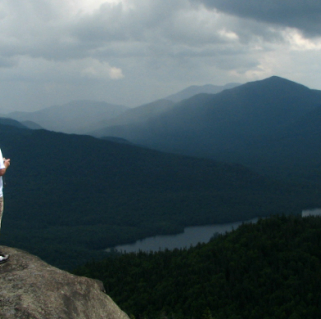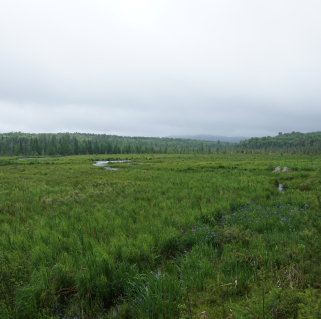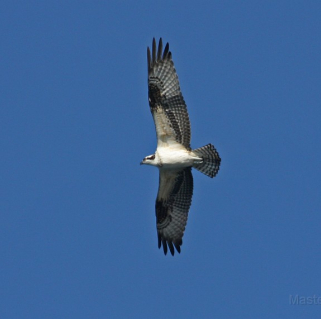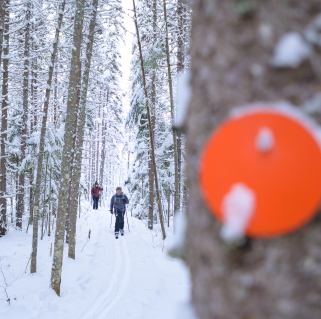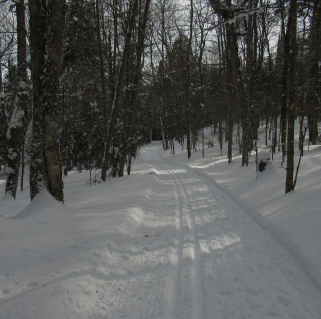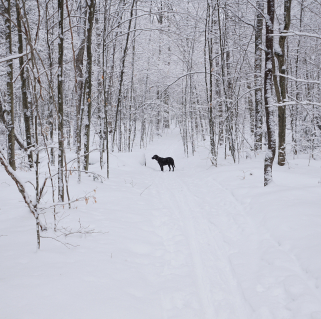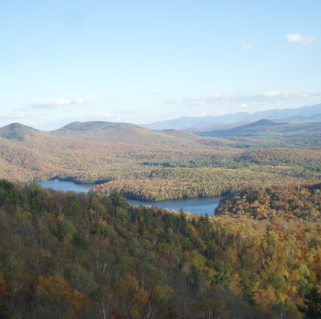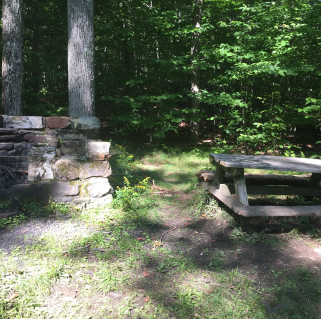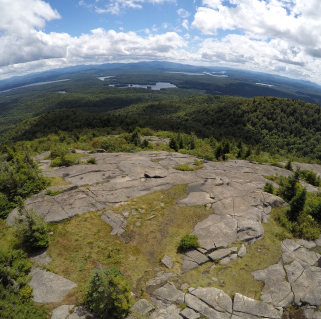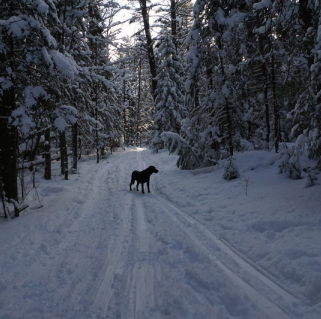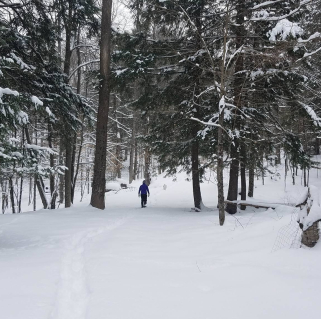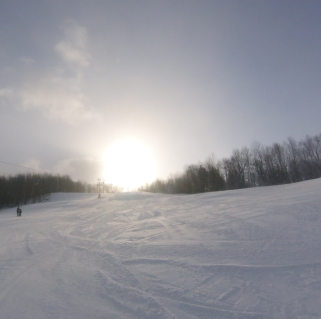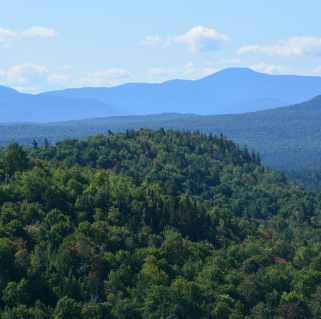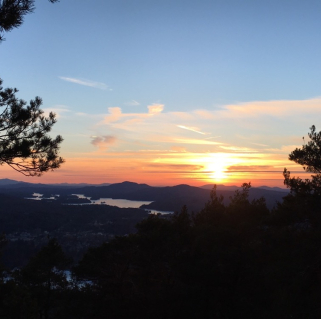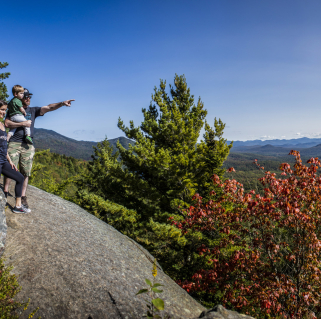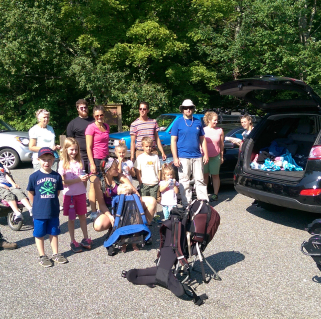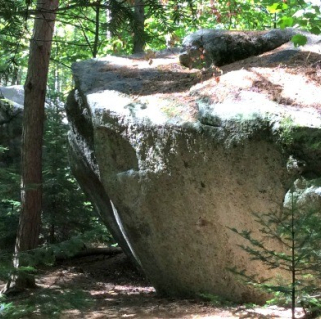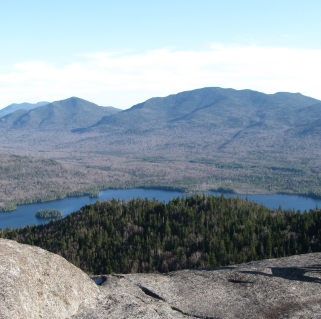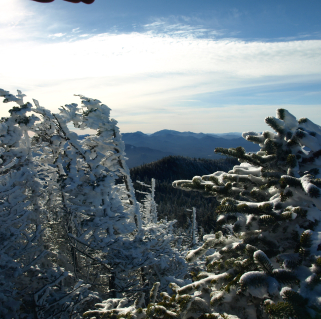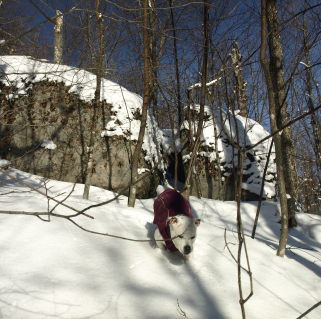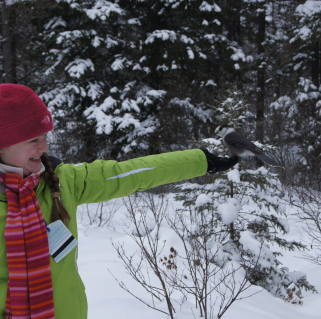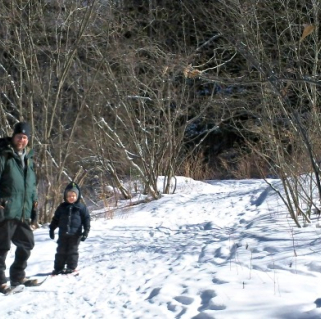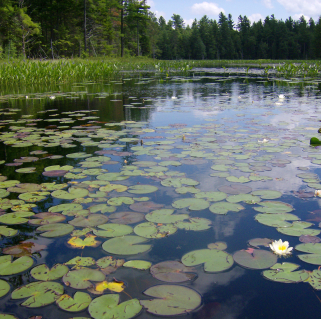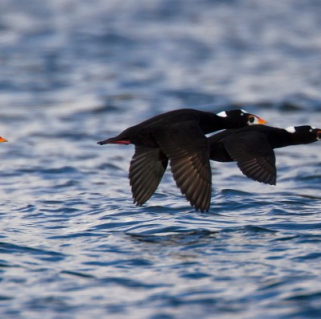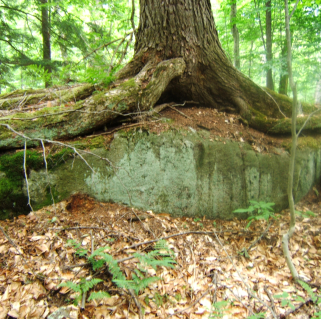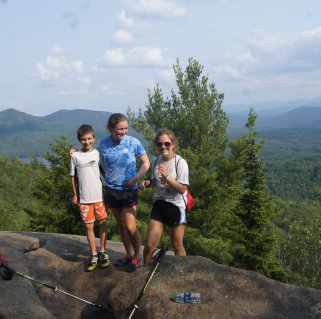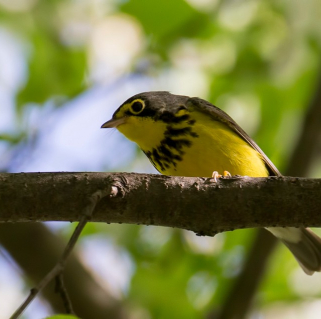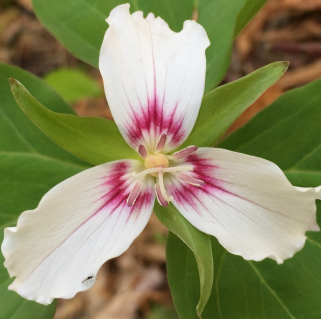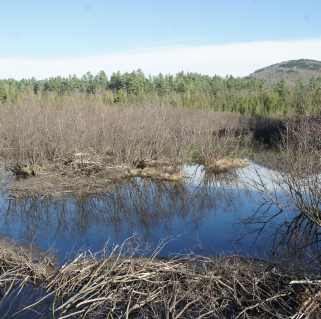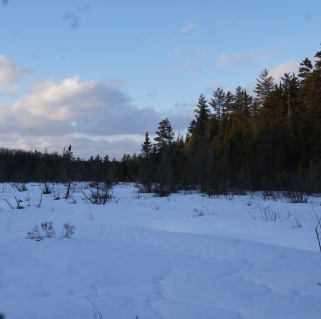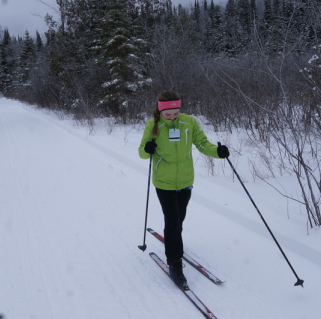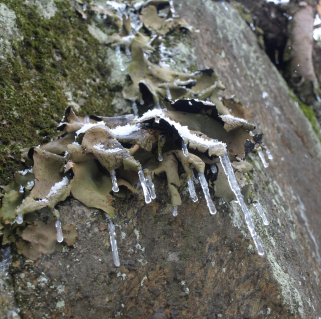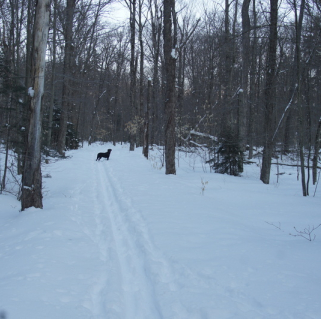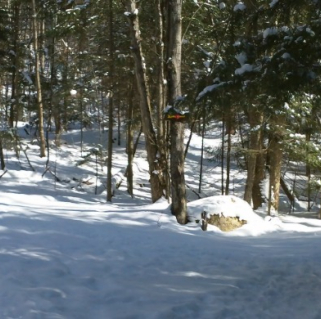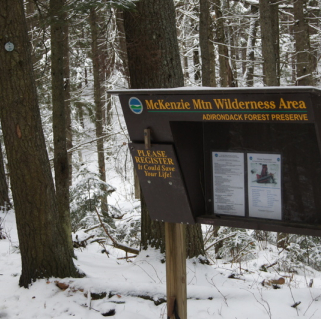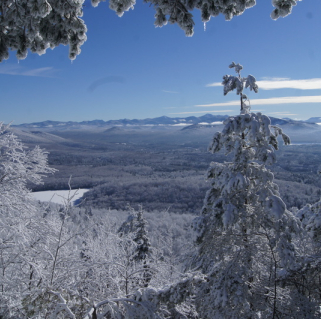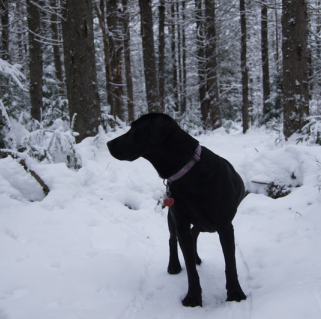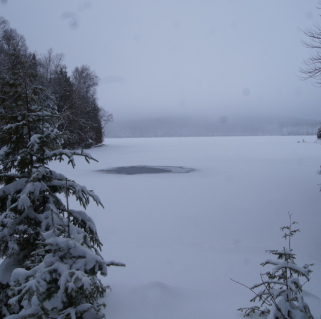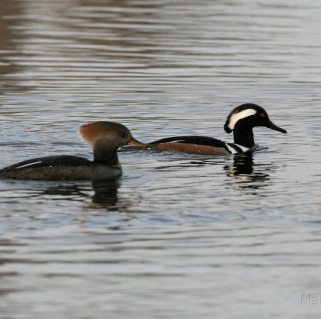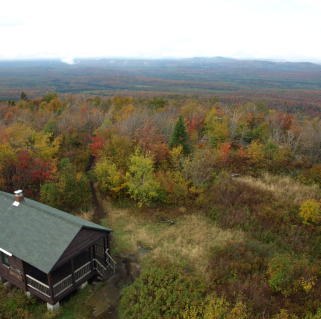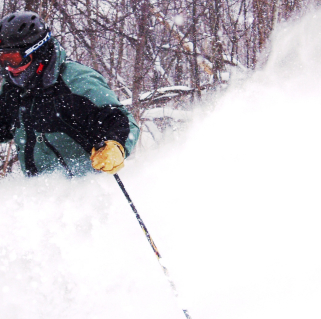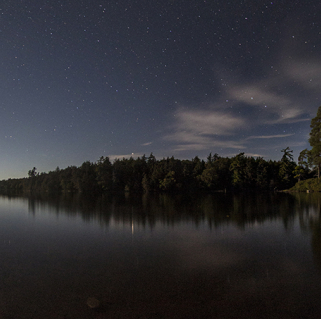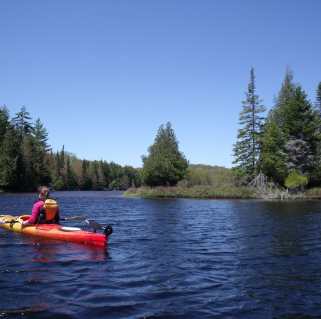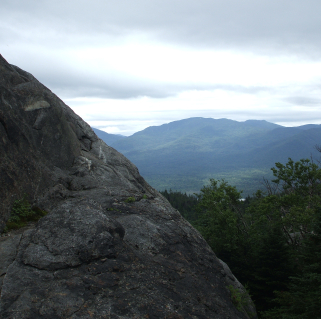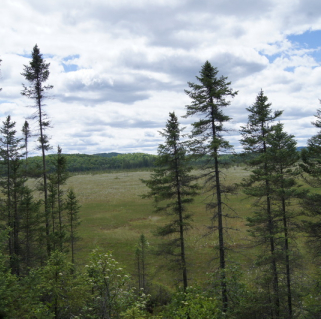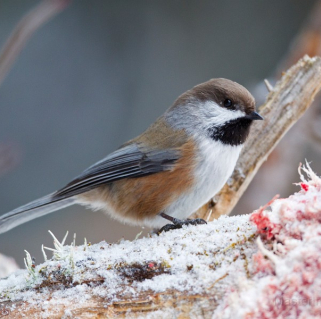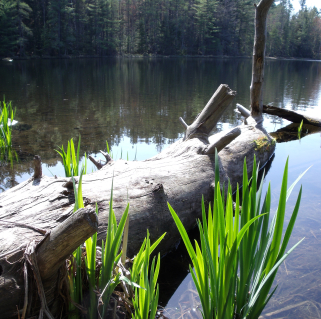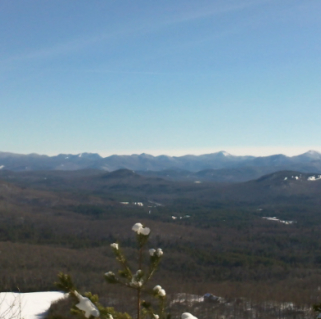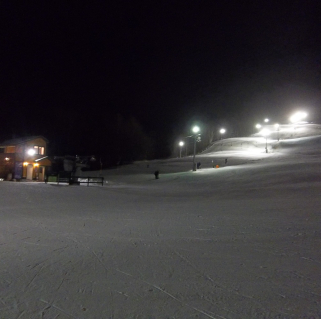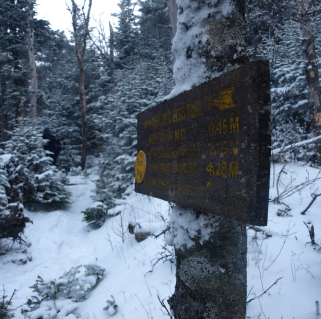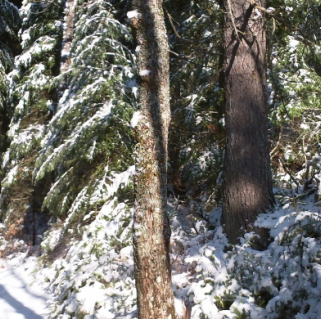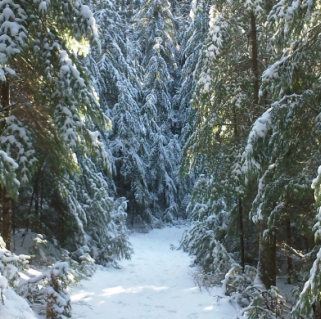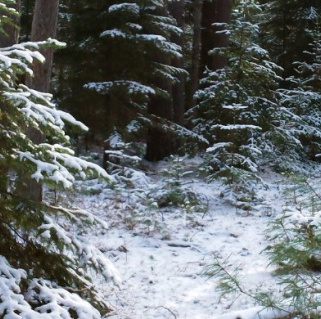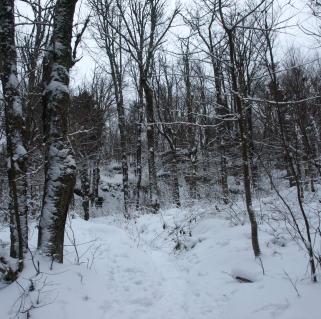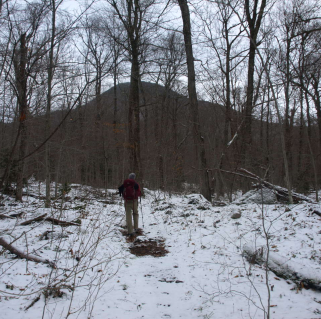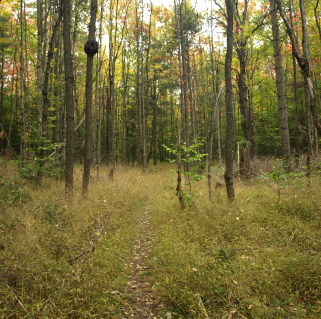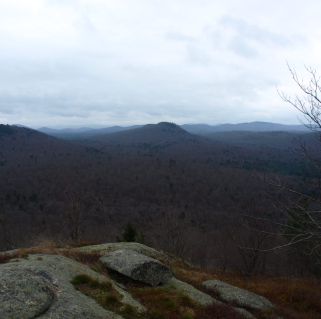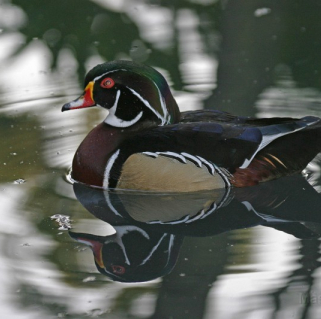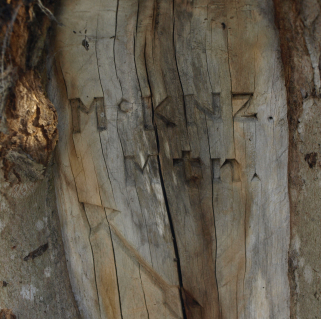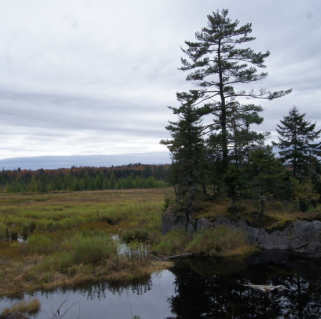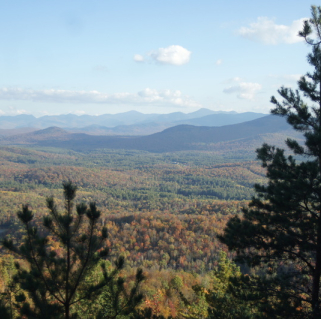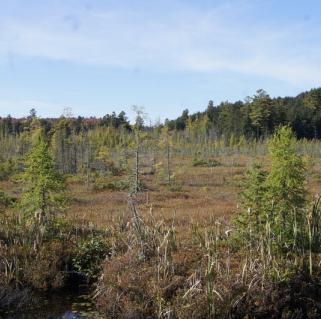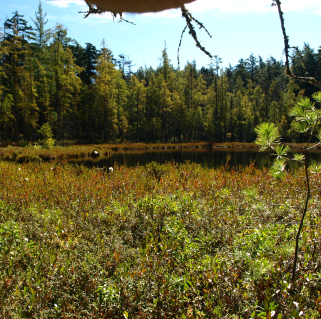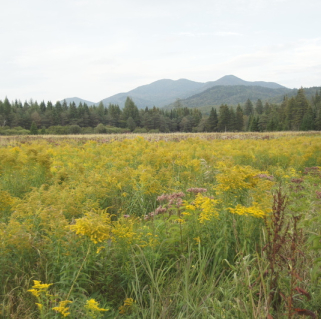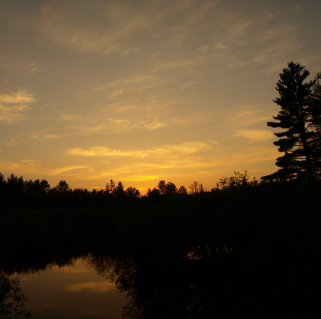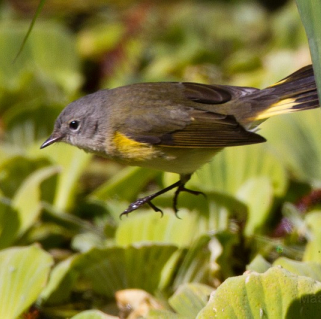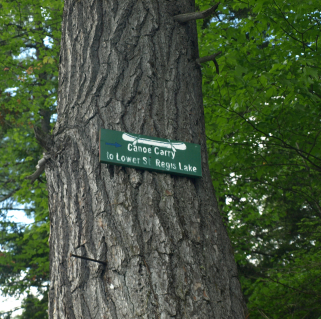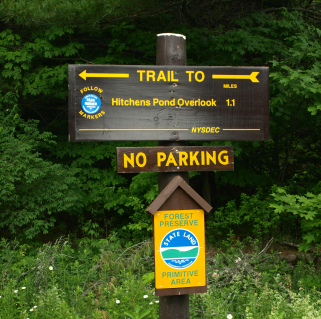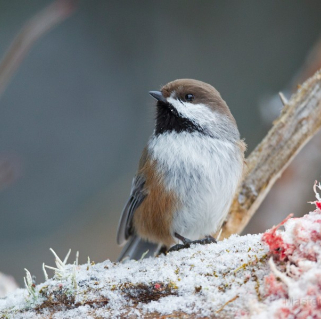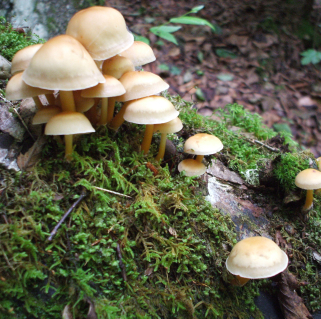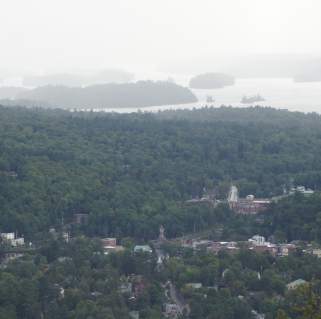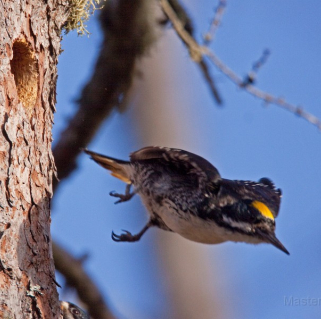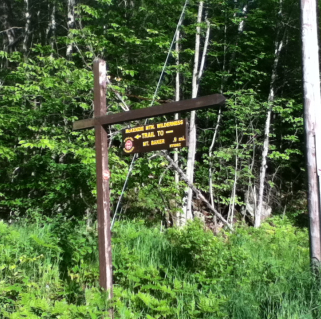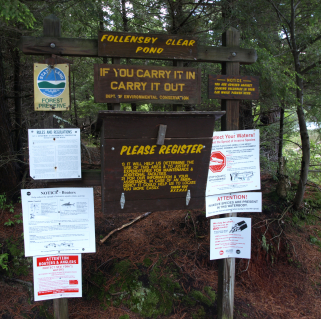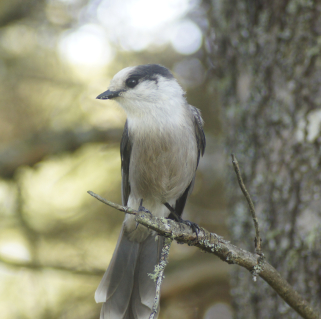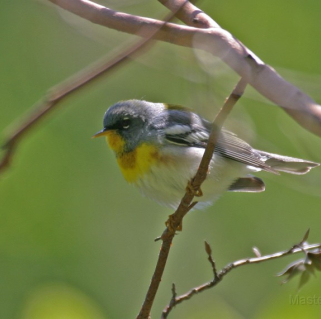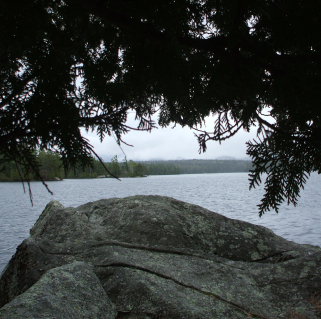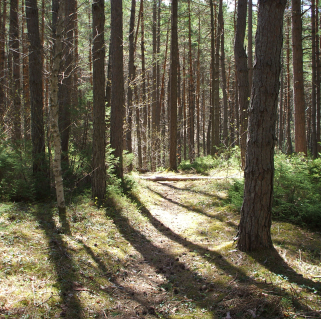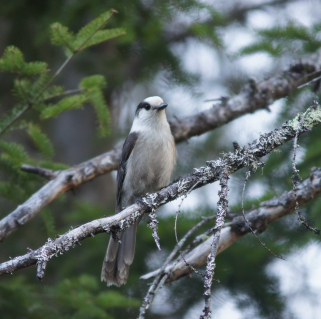Troy Tetreault
January 29, 2024
This blog was originally written in 2023; it was updated in January of 2024.
New York State's premier multi-use, multi-season trail
Construction is on pause for the Adirondack Rail Trail while winter has its grasp on the region, giving snowmobilers and non-motorized users alike a unique opportunity to catch a glimpse of what the future world-class rail trail will look like.
What is the Adirondack Rail Trail?
The Adirondack Railroad once carried tourists aboard a train across the scenic Adirondack wilderness. While rail service ceased long ago, a new form of tourism will utilize this historic travel route.
Construction of the Adirondack Rail Trail consists of three phases and is scheduled for completion in 2025. The first phase, which will connect Lake Placid and Saranac Lake, started in fall 2022. While parts of the trail are still under construction, during the winter, the Adirondack Rail Trail is open for multiple types of recreation. After construction is complete, the multi-use trail will be ten feet wide, topped with crushed stone, and offer access to everything from bicycles to wheelchairs and strollers. For now, the pause in construction means winter outdoor recreation enthusiasts will get unprecedented access to this first section of the trail.
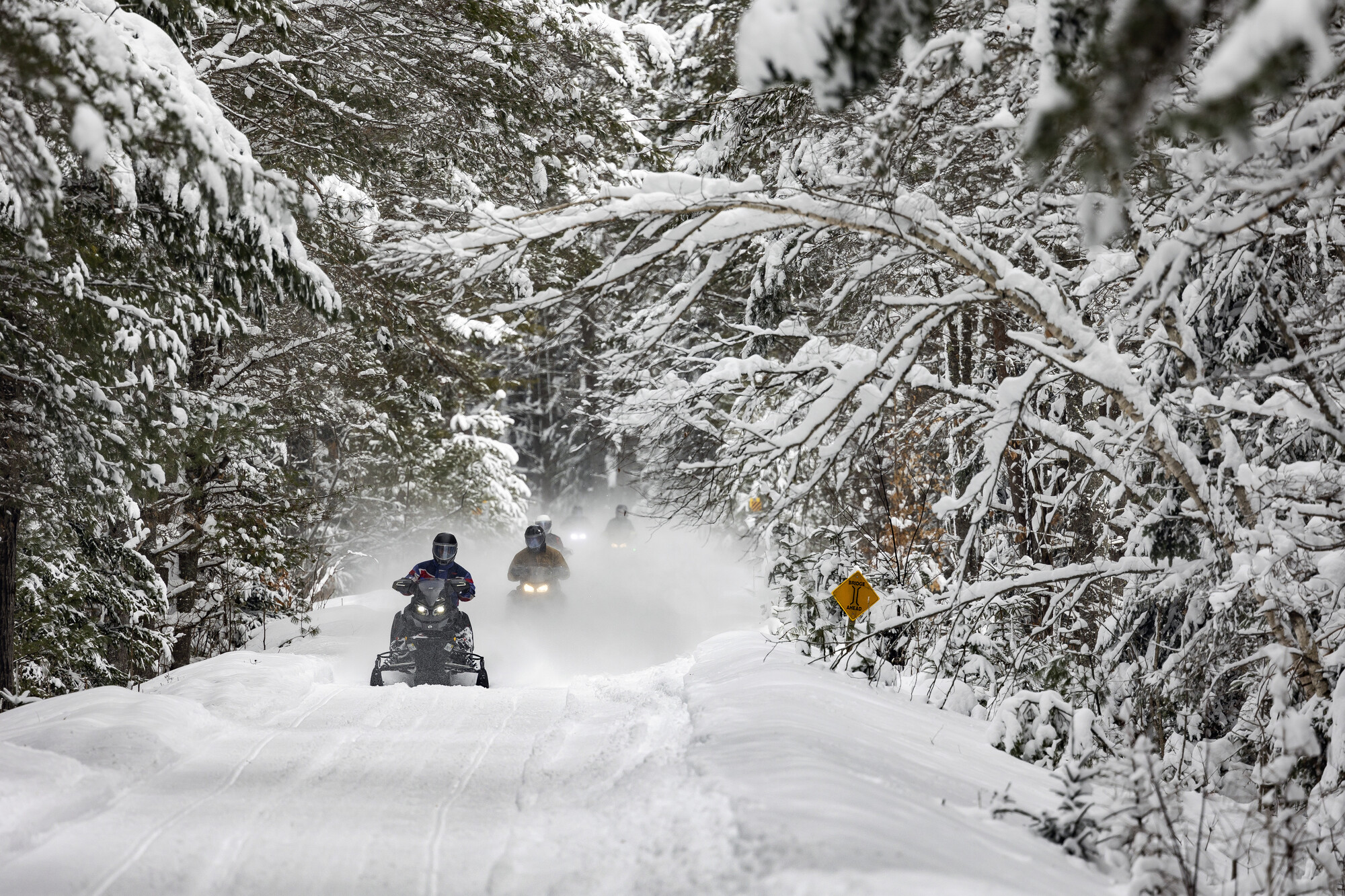
The shared nature of the trail allows for the use of snowmobiles, fat bikes, cross-country skis, and snowshoes to travel across the Forest Preserve and its quaint towns. Since construction is ongoing, various aspects of the trail, including speed limit postings, educational signage, parking, and even grades, are all limited. As such, safety on the trail during this period of winter use is important.
Yielding ethics
Yielding guidelines can be complicated, but there are a few general principles you can follow to improve travel on this wonderful community resource. A rule of thumb, per the Adirondack Rail Trail Association, is that “wheels yield to heels." In other words, snowmobilers should yield to all recreation groups (including trail groomers), and bikers and cross-country skiers should yield to snowshoers. Users should always yield the right-of-way to those passing from behind and traveling uphill.
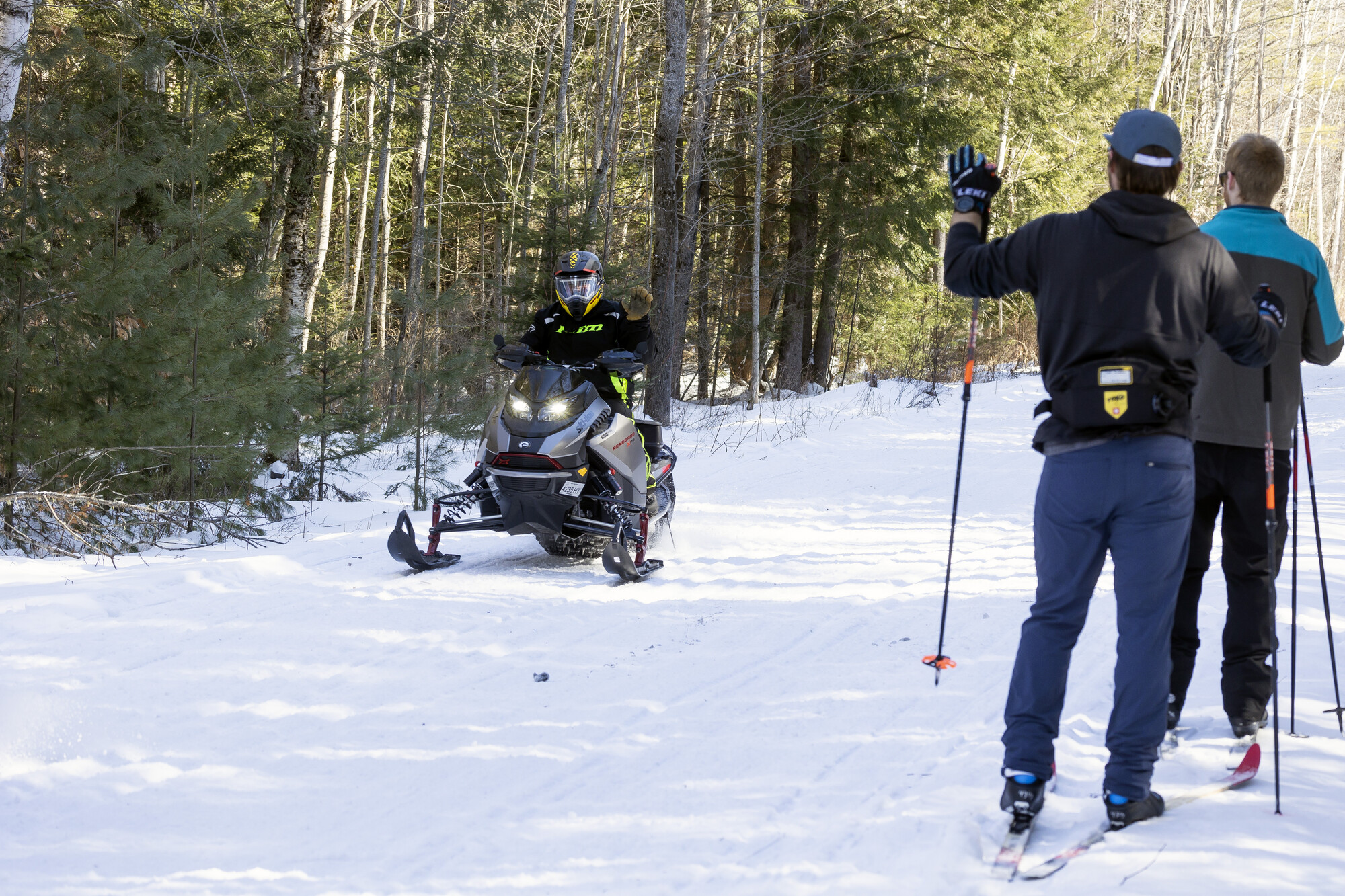
Tips for non-motorized recreation
- Snowshoers should avoid stepping on ski tracks. "Post-holes," when frozen over, can cause serious injury if a ski tip gets caught in one.
- Use a headlamp and wear bright and reflective clothing at night.
- Leash pets are the law on the rail trail.
- Mornings are a peaceful time to go out on the trail when traffic is low. Catch the sunrise and see the animal tracks before they get covered!
- Those using fat bikes on the trail should be aware of possible rail tie fragments and metal pieces from the ongoing construction. Plan ahead by bringing all the needed supplies for repairing your bicycle.
- Check out other trails that can be accessed from the rail trail. The Jackrabbit Trail (maintained by Barkeater Trails Alliance) is a great option!
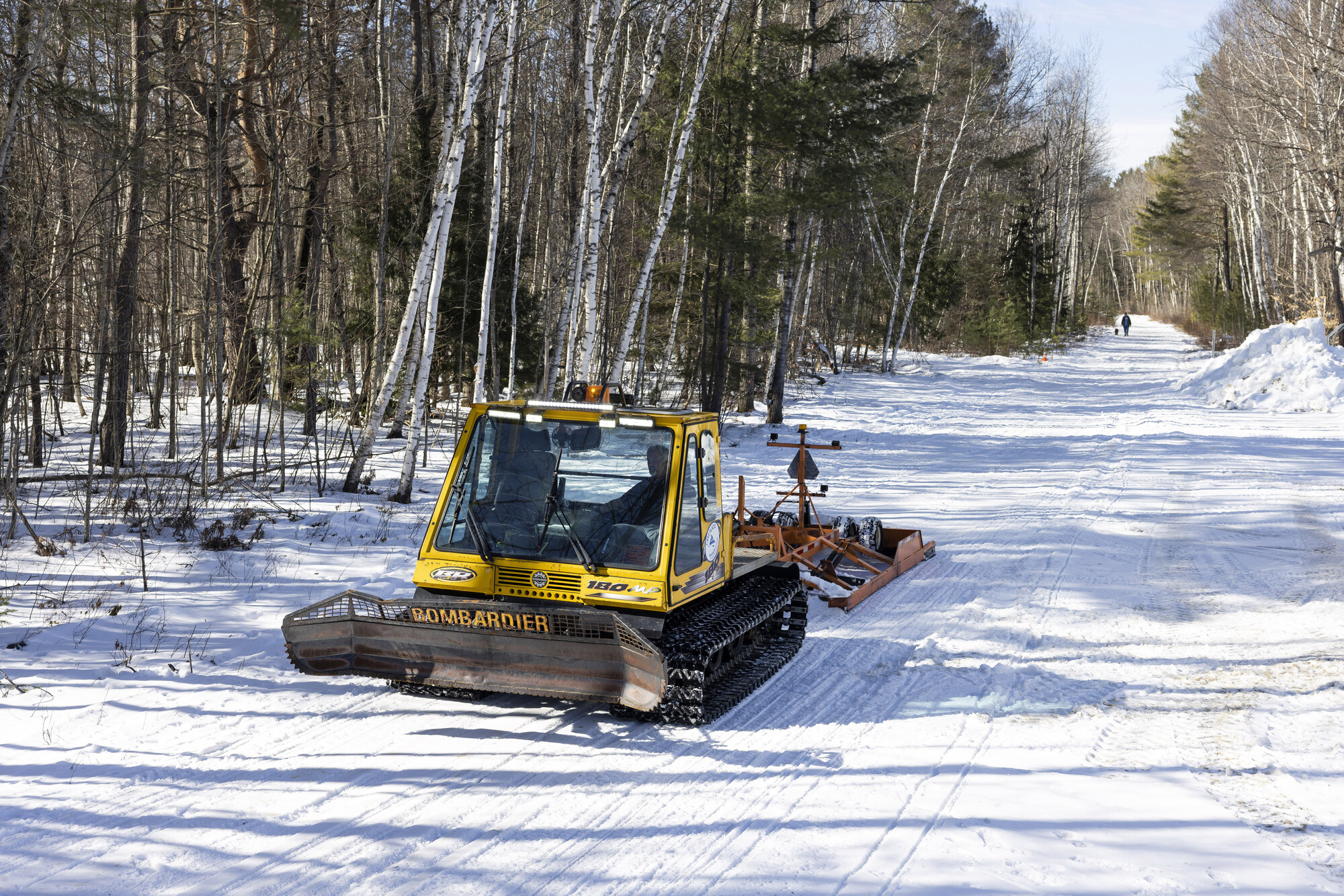
Tips for snowmobilers
- Stick to the right side of the road and pass on the left.
- Look both ways and slow down when passing by pedestrian users.
- Keep noise down in populated areas.
- Pull off as far as possible when stopped.
- Snowmobiles must travel 15 mph through villages and Lake Clear and obey all other signage (“Stop” and “Stop Ahead”). Not all intersections and road crossings have been marked, so use caution when approaching and traveling through these areas.
- Go at the minimum speed required for forward momentum to pass pedestrians, then slowly accelerate to safe speeds.
- If traveling at night, check that all lights work on your snowmobile.
- Don’t drink and drive.
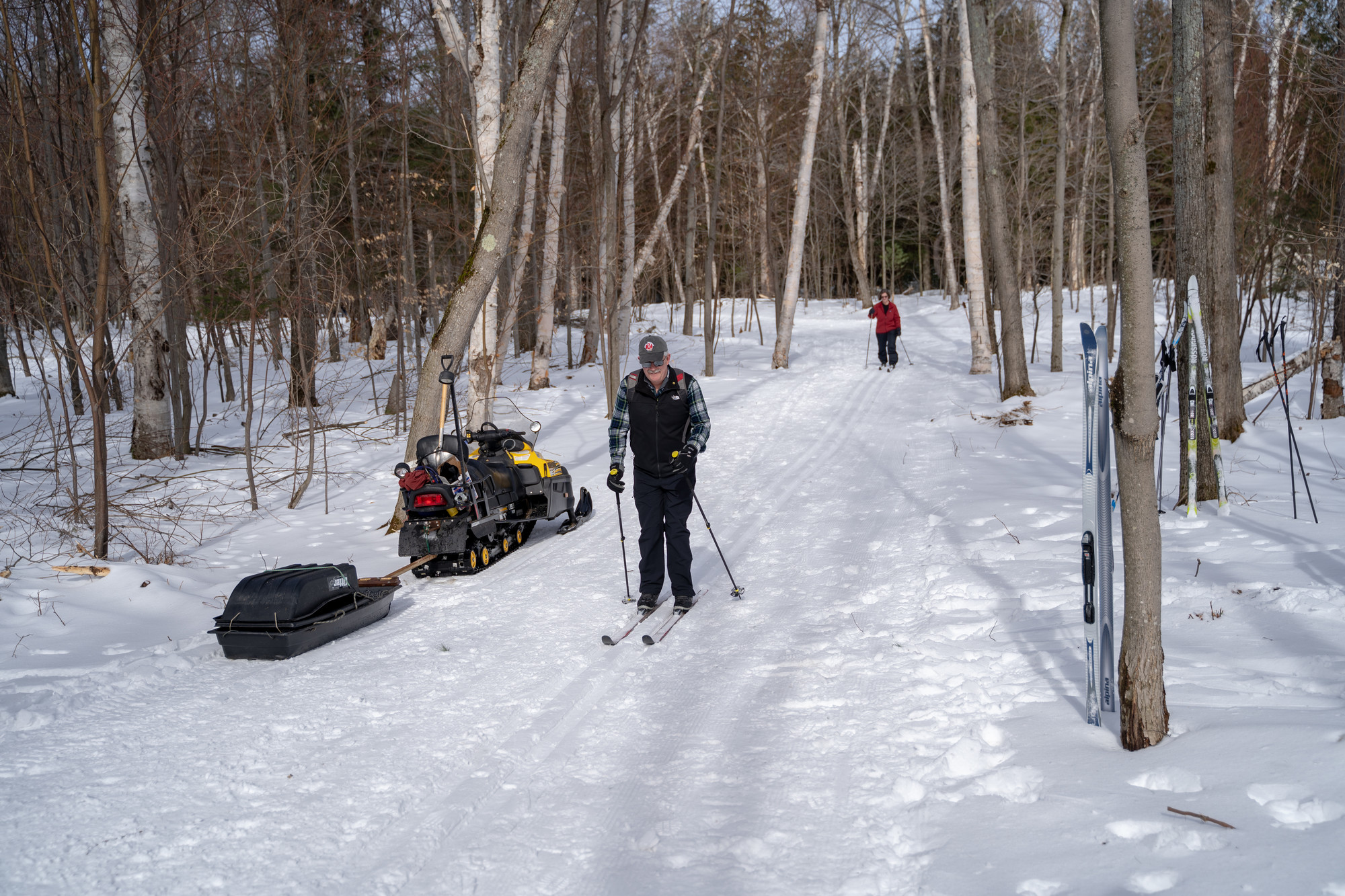
Tips for all user groups
- Checking weather reports and snow conditions will be important, especially during the periods of construction. A good snow base is needed to cover any potential rail tie or metal material present on the trail.
- Respect private property.
- Don’t vandalize signage.
- Follow Leave No Trace principles and Love Your ADK. Be prepared and have all the gear you need for a night in the woods. Some sections of the trail pass through long stretches of the Forest Preserve. Let someone know what your itinerary is and when you expect to be out.
- Stay on the designated trail as it passes through wetlands and sensitive habitats. Leaving the trail could potentially harm rare and endangered flora and fauna. The ecosystem surrounding the trail is part of what makes the Adirondack Park a special place, and we can all do our best by avoiding habitat degradation, as well as carrying out what we carry in!
- When traveling in groups, go single file.
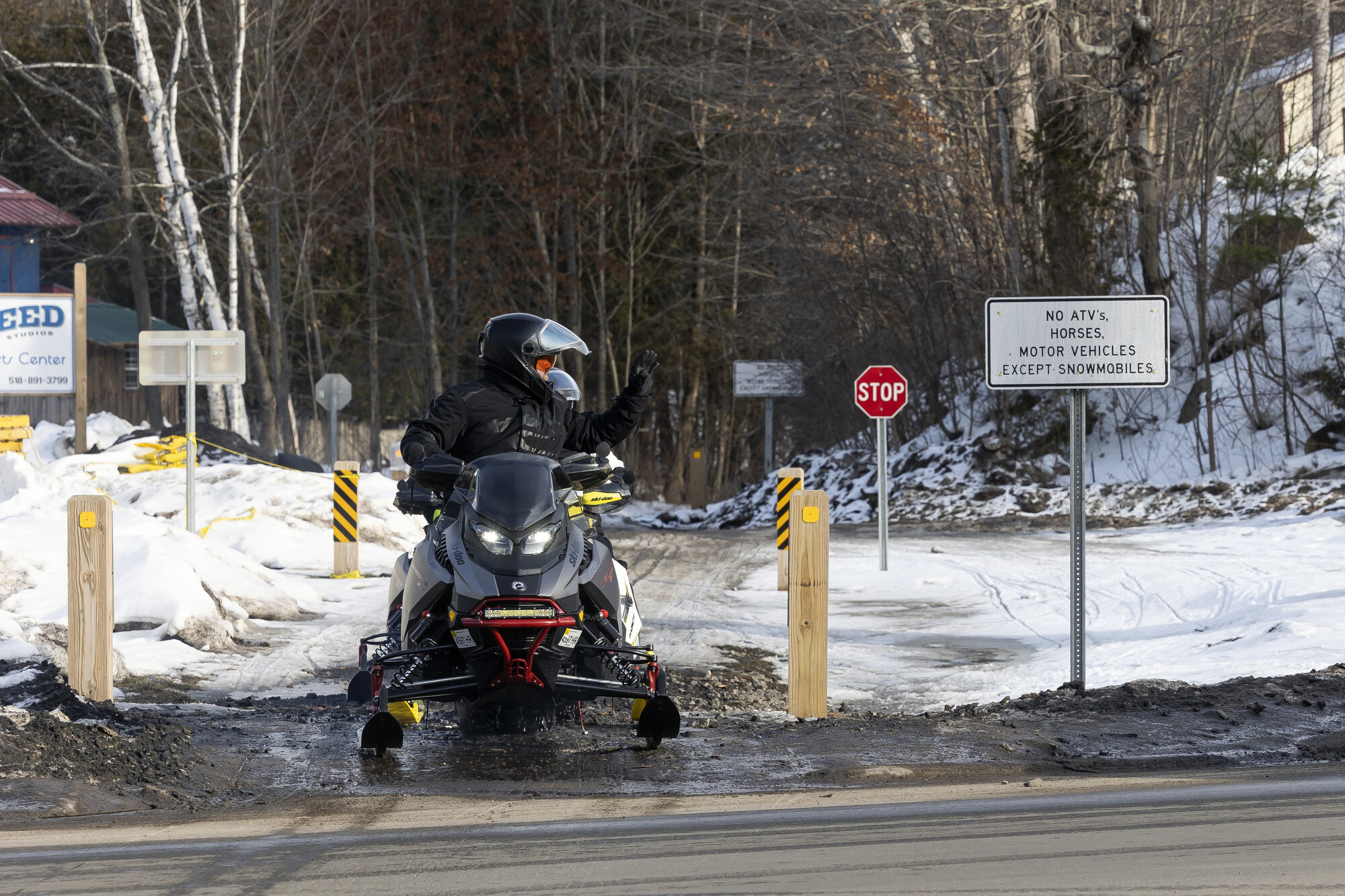
Activities to do on and near the trail
- Snowmobiling - This activity has been ongoing for decades on the Rail Trail. Locations in Lake Placid, Saranac Lake, Lake Clear, and Tupper Lake, such as the historic Charlie’s Inn, offer outstanding services for riders looking for a place to stay, a quick fill-up on gas, or a bite to eat. You can even rent snowmobiles for use on the trail! An invaluable resource for snowmobiling in the Adirondacks is the Adirondacks, USA Snowmobile App. Download it on the App Store or Google Play to gain access to an interactive map, and information you'll need to navigate snowy trails and find gas stations, stores, restaurants, and lodging.
- Snowshoeing and skiing - You’ll get to take in the sights and sounds of the wild spaces you pass through and have the flexibility to take some side trails accessible from the main path. You can find equipment, gear rentals, and local guides at stops all along the trail. One of these is St. Regis Canoe Outfitters, which can tailor a daily excursion to your ability level!
- Fat-tire biking - A favorite for winter recreationists on rail trails. In conjunction with the hard work of trail groomers and snowmobiles packing the snow, conditions can be consistently enjoyable. Looking to get into fat-tire biking in the tri-lakes area? Check out one of the local bicycle shops in Saranac Lake or Lake Placid for more information on renting or purchasing your own fat tire bike!
- Ice fishing - A wonderful opportunity to explore the lakes and ponds along the trail. Not familiar with ice fishing? Contact a local guide for more information about experiencing this classic Adirondack pastime on a body of water accessible from the trail.
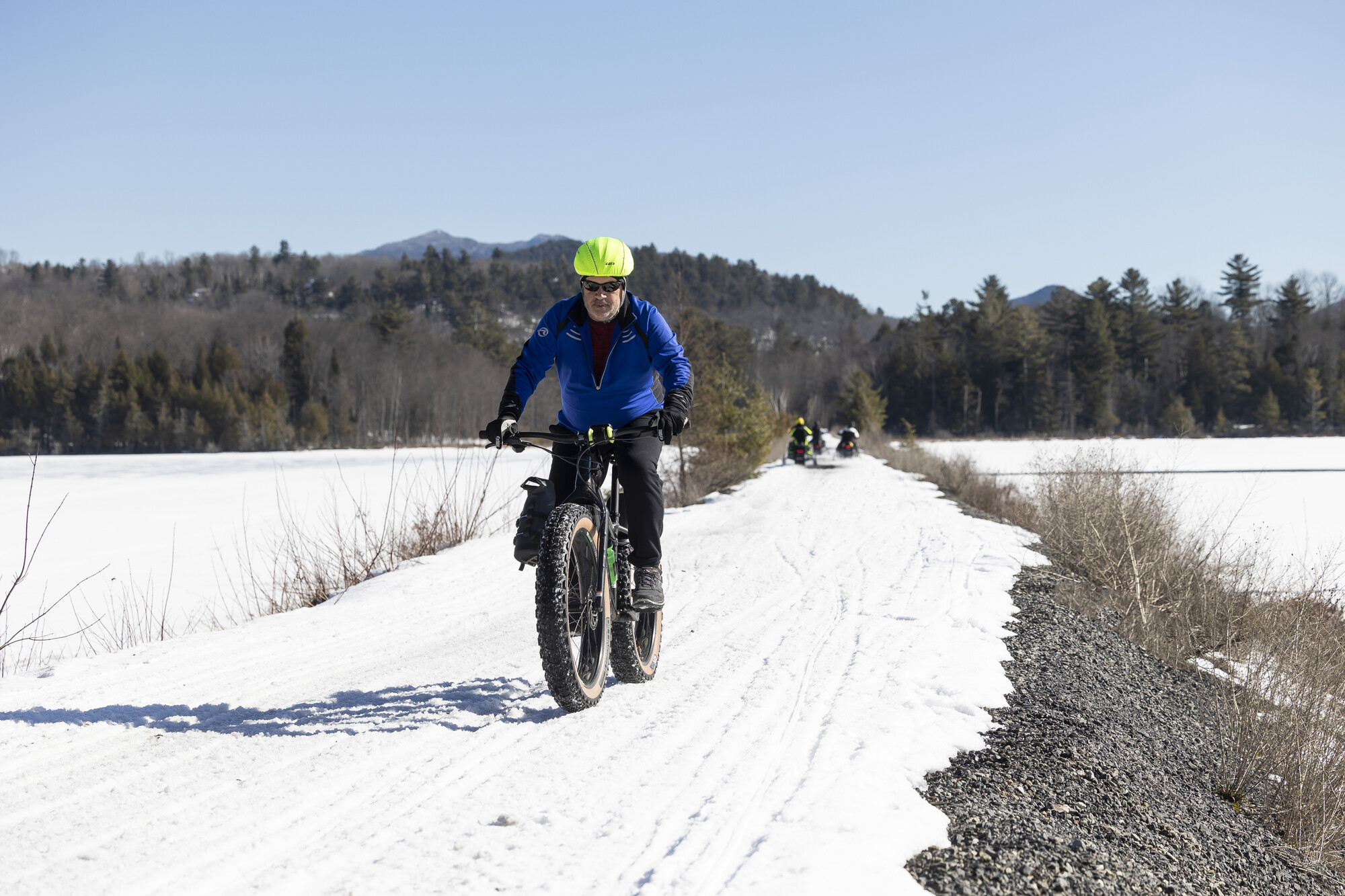
No matter how you choose to enjoy the Adirondack Rail Trail, be sure to keep up to date on construction updates to ensure you get the best possible experience. Check out the Adirondack Rail Trail Association and the Department of Environmental Conservation (DEC) for more information.
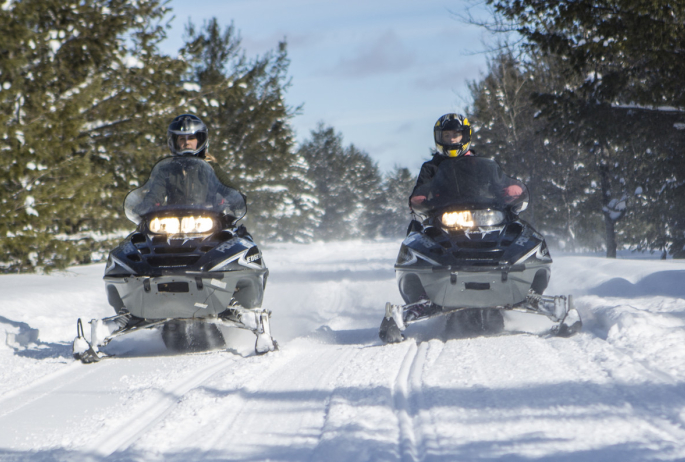
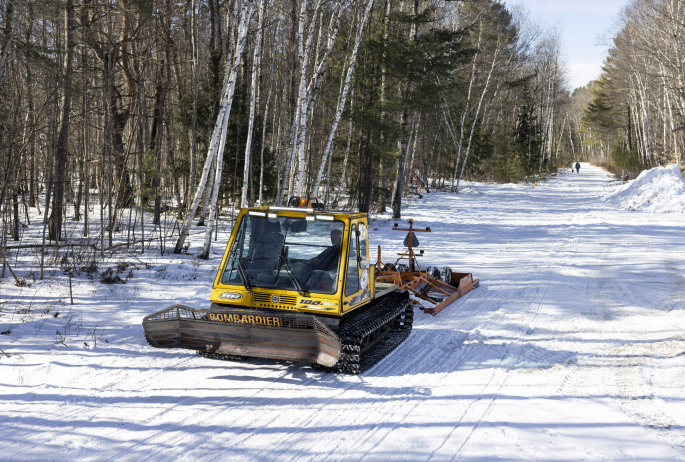
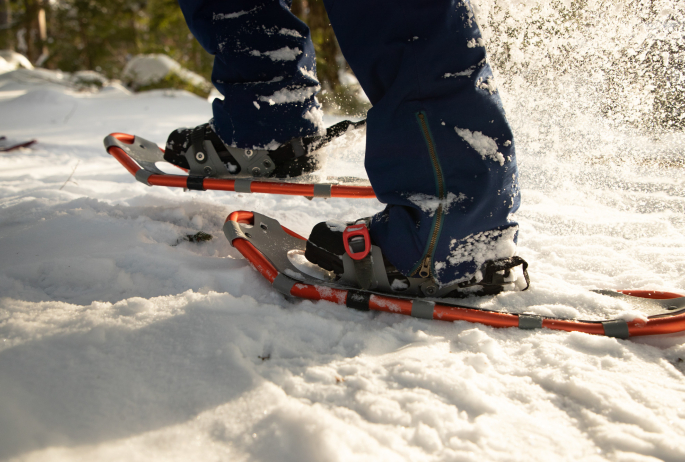
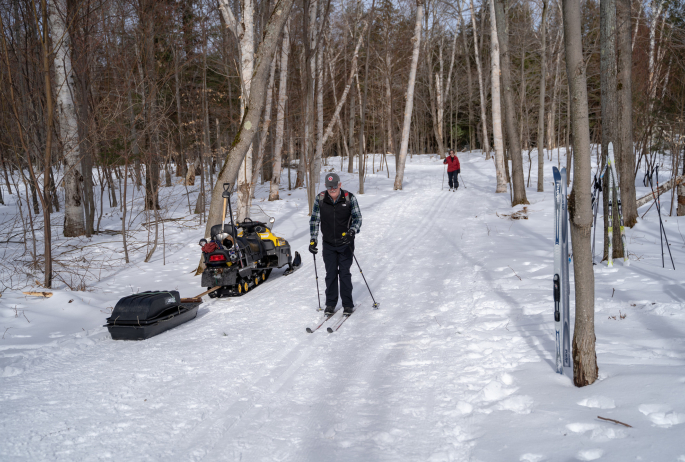
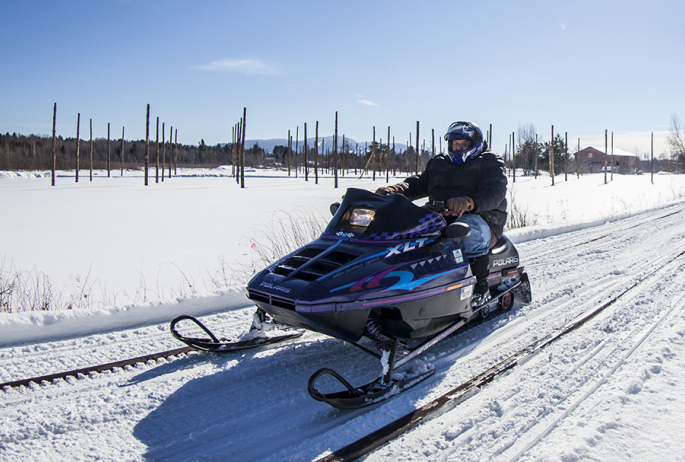
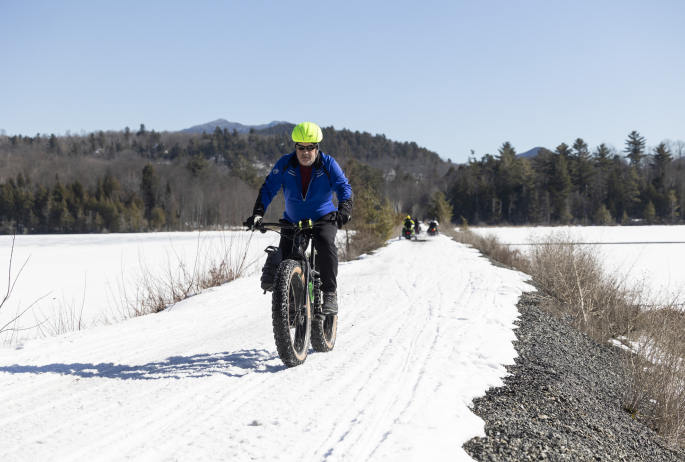
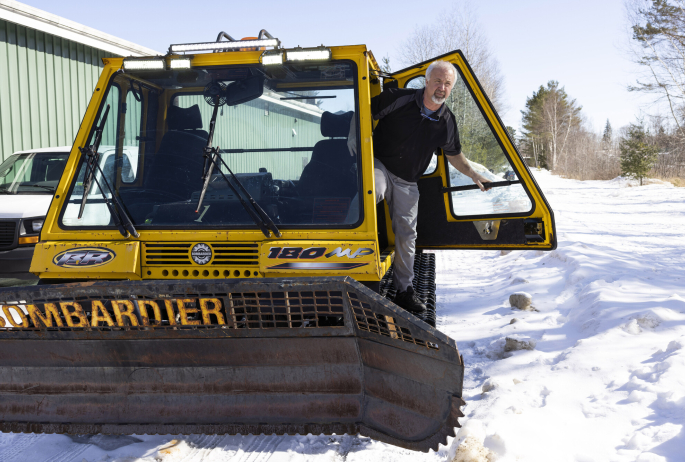
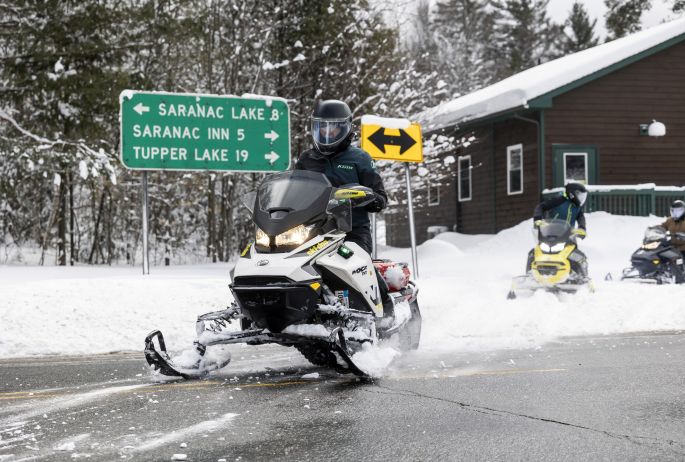
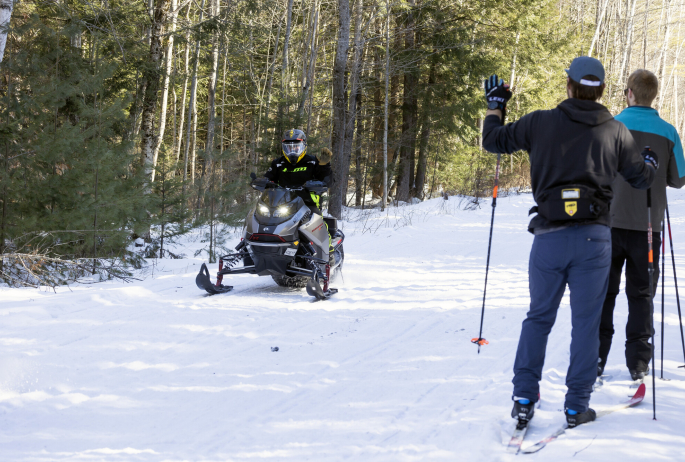
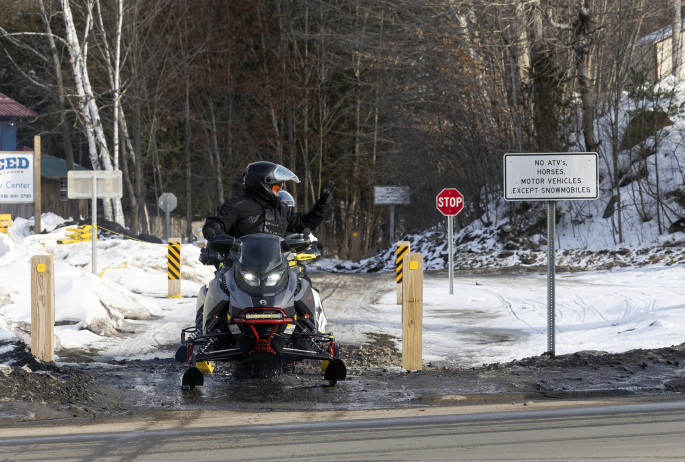
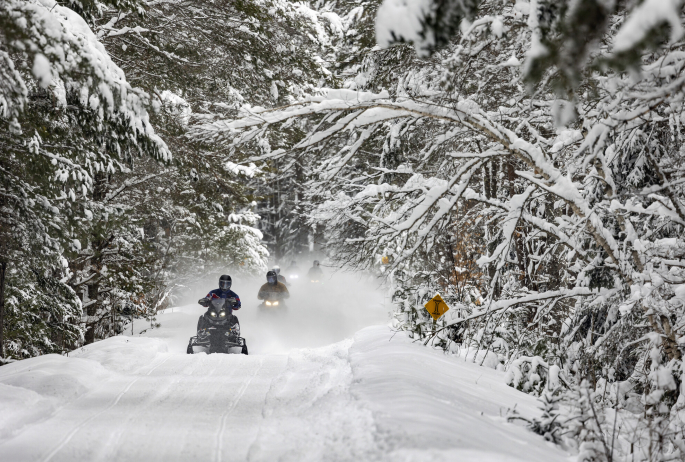
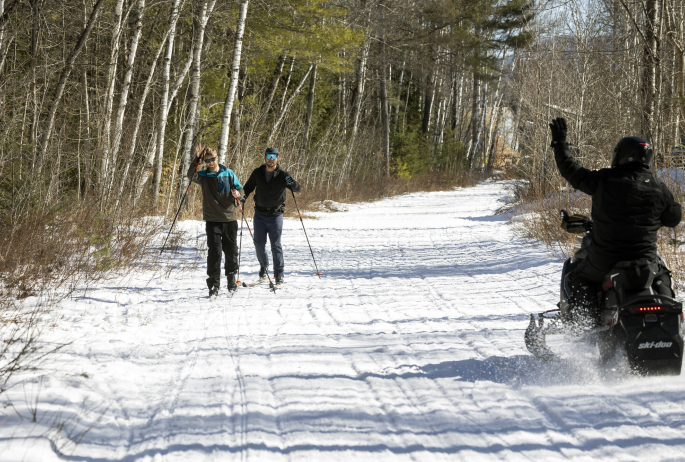
Packages and Promotions
Valid Jan. 21
- Jan. 21
Valid Jan. 21
- Jan. 21
Stay and Dine
Voco Saranac Lake
Receive a 50 dollar credit per stay to use in our Boathouse Saranac Lake Pub. Enjoy an exceptional dining experience with unparalleled views great...
